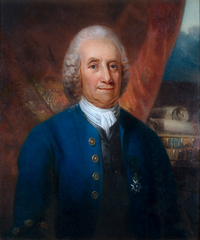
Photo from wikipedia
ABSTRACT In 1758 in London, Swedish natural philosopher and mystic theologian Emanuel Swedenborg published De Telluribus in Mundo nostro Solari (Earths in our solar system), a treatise on the plurality… Click to show full abstract
ABSTRACT In 1758 in London, Swedish natural philosopher and mystic theologian Emanuel Swedenborg published De Telluribus in Mundo nostro Solari (Earths in our solar system), a treatise on the plurality of worlds and life on other planets. During the seventeenth and eighteenth centuries, these topics formed a heterogenous literary genre which encompassed theology, astronomy, philosophy and satire. In De Telluribus, Swedenborg made detailed claims of communication with extraterrestrial spirits in the afterlife, through which he sought to spread his theology to new audiences. The paper will explore the role of De Telluribus in Swedenborg's career, explain its content and analyse its polarized reception. It will show that De Telluribus combined for the first time the literary codes of two popular genres during the period, namely those concerning the plurality of worlds and the dialogues of the dead. By doing so, the paper revises current scholarly understanding of Swedenborg by showcasing him as a versatile yet ill-fated recombiner of literary genres. More broadly, the paper will shed light upon previously unnoticed eighteenth-century literary interactions along with a wider overview on the reception of themes such as the plurality of worlds, mysticism and satire in Scandinavia and Germany.
Journal Title: Annals of Science
Year Published: 2020
Link to full text (if available)
Share on Social Media: Sign Up to like & get
recommendations!